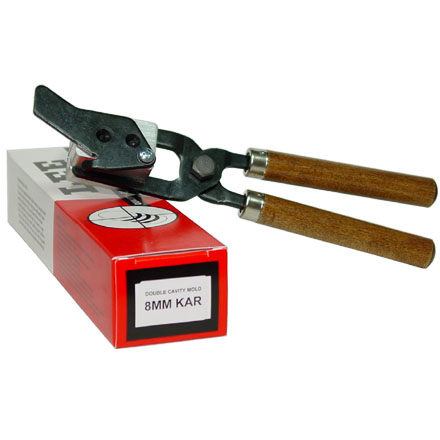Hello everyone, some background before I ask my question. I am new to the cast boolit hobby. So new that I have not even cast any boolits yet. I still have trouble spelling boolits. I have used with great success, the old lyman .45 cal round ball mold that I got for my dad to make ammo for his sling shot long ago. I am a retired industrial technology teacher with all of my fingers. I have lots of experience teaching safe work habits. Used to teach kids about machining and foundry practices. They ran lathes, cast brass and aluminum, etc. I also have a quite a bit of reloading experience from 30 years ago, before life got in the way and the farmland around our home started growing houses instead of corn, beans and wheat. I used to shoot a lot and reload for my 22-250 and .221 fireball. Still have all the tooling from that.
I know how to safely work up a load. But I have always had a loading manual as a starting point. Just saying that I have the safety mindset and mechanical skills required do what I am going to ask, just no experience in this specific area.
I mentioned in the old military rifle section of this forum, I have my grandpas S-147, 1936, 8mm Mauser. The bore slugged at .326. It is in great shape. I have fired a few rounds of surplus military ammo. Accuracy was not spectacular. From standing I was able to hit 3-4" logs and scatter a few rounds into an regular sized paper plate at 50 yards. I know that is not great testing data, but it was fun anyway!! I am guessing that since the .324 bullets were rattling around in the .326 bore, that may have been a contributing factor accuracy. I now have reloading dies for it.
I have found are no commercial bullets correct size, and only one mold even close is available. There is no point trying to work up a load with bullets that I know are too small start with. So I am going to make my own mold. I have a small machine shop in my basement, all old school no CNC, machining skills are not an issue. I can make whatever shape I decide on. This will be part of the fun for me, the reward will be shooting whatever the result is.
Bullet, oops I mean boolit, design is the issue. I have read a lot, and have many of the drawings for various boolits available in .324. I could just copy one of these designs and make the mold a bit larger. Getting to my question, the grooves in cast boolits are an issue. It is a bunch easier to make a mold with no grooves.
I have been reading the power coating threads. That seems to be the way to go since I have never done either of the lubing processes. All of the threads I have read are simply power coating grooved boolits instead of using various other lube methods. Some info I have found mentions the grooves give the lead someplace to deform into as it engages the barrel. This puzzles me since copper jackets do not have any place to deform into as they are fired.
While reading this morning I found this, "The polymer coating on the Federal Syntech bullets prevent harsh metal-on-metal contact between the bullet and bore, eliminating copper and lead fouling. In internal testing against conventional FMJ bullets, Syntech produced an average of 12 percent less barrel friction and 14 percent less heat. It also eliminates lead and copper fouling. Syntech bullets keep your gun cleaner, longer, so you can shoot more—and shoot better."
This appears to be powder coated commercial bullets with no grooves. I have not found any rifle bullets that are polymer coated. This discovery pushed me over the edge, now I am thinking that I am going to start by making a mold to throw a boolit about 180 grain x .326 then powercoat to bump the size up a little.
No need to address how much time this will take. I also know there is also software available for bullet design. I am planning to just take a common design and try it with no grooves.
My question, am I totally out of line in my approach to this? Any suggestions or comments are appreciated.
Thanks for your time.
John

|
   
   
|


|



 Reply With Quote
Reply With Quote


















